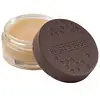What's inside
What's inside
 Key Ingredients
Key Ingredients

 Benefits
Benefits

 Concerns
Concerns

 Ingredients Side-by-side
Ingredients Side-by-side

Glycerin
HumectantRicinus Communis Seed Oil
MaskingCaprylic/Capric Triglyceride
MaskingMangifera Indica Seed Butter
Skin ConditioningOleic/Linoleic/Linolenic Polyglycerides
EmollientC10-18 Triglycerides
EmollientWater
Skin ConditioningMacadamia Integrifolia Seed Oil
Skin ConditioningGlyceryl Behenate
EmollientGlyceryl Stearate
EmollientCeramide Ng
Skin ConditioningSodium Hyaluronate
HumectantHydrogenated Castor Oil
EmollientTocopherol
AntioxidantMenthoxypropanediol
MaskingGlycerin, Ricinus Communis Seed Oil, Caprylic/Capric Triglyceride, Mangifera Indica Seed Butter, Oleic/Linoleic/Linolenic Polyglycerides, C10-18 Triglycerides, Water, Macadamia Integrifolia Seed Oil, Glyceryl Behenate, Glyceryl Stearate, Ceramide Ng, Sodium Hyaluronate, Hydrogenated Castor Oil, Tocopherol, Menthoxypropanediol
Caprylic/Capric Triglyceride
MaskingOleic/Linoleic/Linolenic Polyglycerides
EmollientC10-18 Triglycerides
EmollientGlycerin
HumectantSimmondsia Chinensis Seed Oil
EmollientGlyceryl Behenate
EmollientGlyceryl Stearate
EmollientHydrogenated Castor Oil
EmollientJojoba Esters
EmollientOctyldodecanol
EmollientHelianthus Annuus Seed Wax
Skin ConditioningCeramide NP
Skin ConditioningMentha Piperita Oil
MaskingCaramel
Cosmetic ColorantAcacia Decurrens Flower Wax
EmollientPolyglycerin-3
HumectantLimonene
PerfumingLinalool
PerfumingCaprylic/Capric Triglyceride, Oleic/Linoleic/Linolenic Polyglycerides, C10-18 Triglycerides, Glycerin, Simmondsia Chinensis Seed Oil, Glyceryl Behenate, Glyceryl Stearate, Hydrogenated Castor Oil, Jojoba Esters, Octyldodecanol, Helianthus Annuus Seed Wax, Ceramide NP, Mentha Piperita Oil, Caramel, Acacia Decurrens Flower Wax, Polyglycerin-3, Limonene, Linalool
 Reviews
Reviews

Ingredients Explained
These ingredients are found in both products.
Ingredients higher up in an ingredient list are typically present in a larger amount.
C10-18 Triglycerides is a skin conditioning and texture-enhancer.
It is created from glycerin and a mixture of C10-18 fatty acids.
This ingredient improves spreadability and helps thicken a product.
According to manufacturers, it usually comes from vegetable-based saturated fatty acids. Common bases for this ingredient are coconut oil, palm kernel oil, or both.
Due to the melting point being close to skin temperature, it is usually used in lip products.
Triglycerides are a main component of fat in the human body.
Learn more about C10-18 TriglyceridesThis ingredient is an emollient, solvent, and texture enhancer. It is considered a skin-softener by helping the skin prevent moisture loss.
It helps thicken a product's formula and makes it easier to spread by dissolving clumping compounds.
Caprylic Triglyceride is made by combining glycerin with coconut oil, forming a clear liquid.
While there is an assumption Caprylic Triglyceride can clog pores due to it being derived from coconut oil, there is no research supporting this.
Learn more about Caprylic/Capric TriglycerideGlycerin is already naturally found in your skin. It helps moisturize and protect your skin.
A study from 2016 found glycerin to be more effective as a humectant than AHAs and hyaluronic acid.
As a humectant, it helps the skin stay hydrated by pulling moisture to your skin. The low molecular weight of glycerin allows it to pull moisture into the deeper layers of your skin.
Hydrated skin improves your skin barrier; Your skin barrier helps protect against irritants and bacteria.
Glycerin has also been found to have antimicrobial and antiviral properties. Due to these properties, glycerin is often used in wound and burn treatments.
In cosmetics, glycerin is usually derived from plants such as soybean or palm. However, it can also be sourced from animals, such as tallow or animal fat.
This ingredient is organic, colorless, odorless, and non-toxic.
Glycerin is the name for this ingredient in American English. British English uses Glycerol/Glycerine.
Learn more about GlycerinGlyceryl Behenate is a fatty acid created from glycerin and behenic acid. It is an emollient and emulsifier.
This ingredient may not be Malassezia folliculitis, or fungal acne safe.
Glyceryl Stearate is a mix of glycerin and stearic acid.
It is used to stabilize the mixing of water and oil ingredients. By preventing these ingredients from separating, it can help elongate shelf life. It can also help thicken the product's texture.
As an emollient, it helps soften skin and supports barrier-replenishing ingredients.
In cosmetics, Glyceryl Stearate is often made from vegetable oils or synthetically produced.
This ingredient may not be fungal-acne safe
Fun fact: The human body also creates Glyceryl Stearate naturally.
Learn more about Glyceryl StearateHydrogenated Castor Oil is created by adding hydrogen to castor oil. This helps stabilize the castor oil and raises the melting point. At room temperature, hydrogenated castor oil is solid.
Castor Oil helps moisturize the skin. It is rich in a fatty acid called ricinoleic acid. This fatty acid helps prevent moisture loss on the skin. This helps keep your skin soft and hydrated. Ricinoleic acid also has anti-inflammatory and pain reducing properties.
As a wax-like substance, Hydrogenated Castor Oil acts as an emollient. Emollients help keep your skin stay soft and smooth by creating a barrier. This barrier helps trap moisture.
Hydrogenated Castor Oil may not be fungal-acne safe. We recommend speaking with a professional.
Learn more about Hydrogenated Castor OilOleic/Linoleic/Linolenic Polyglycerides isn't fungal acne safe.